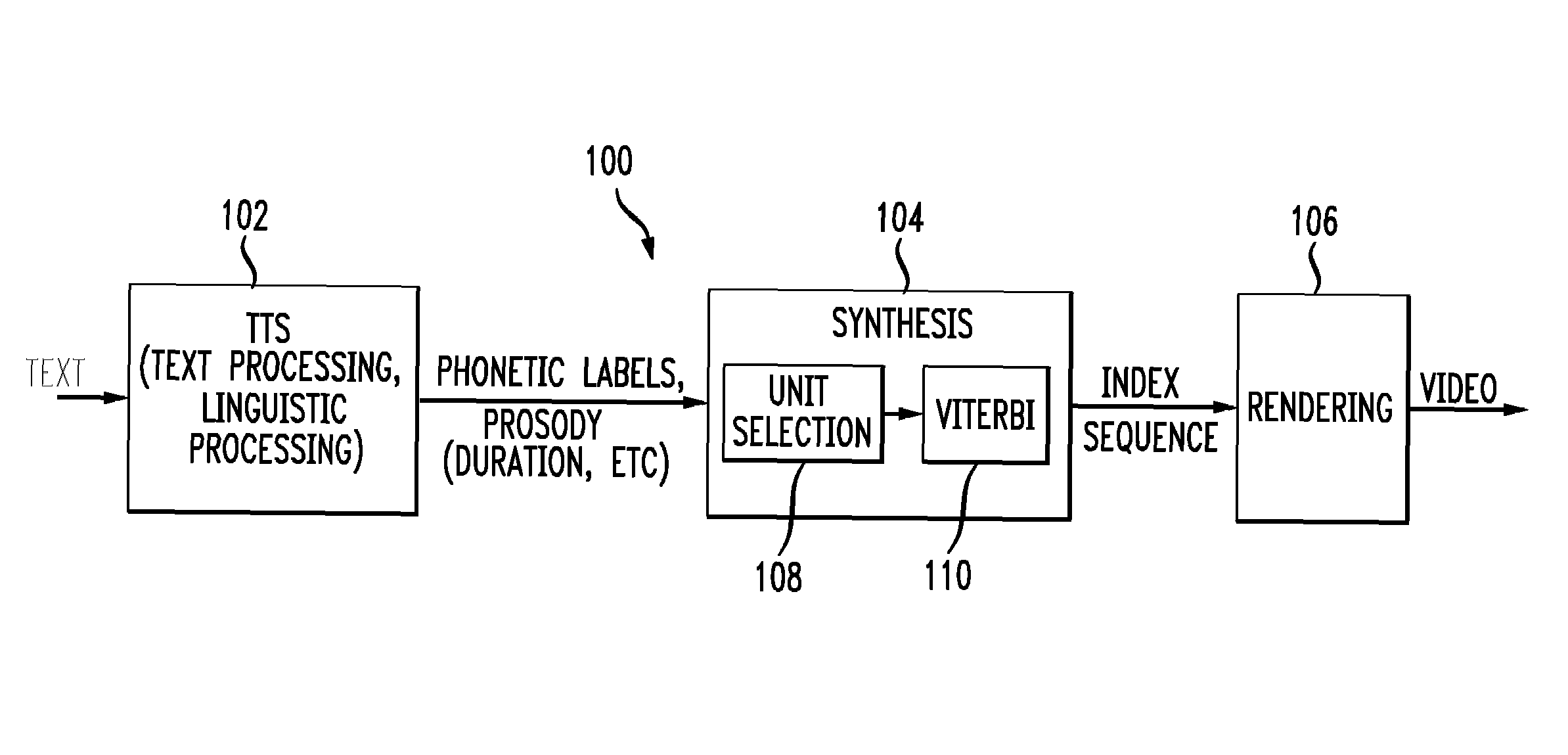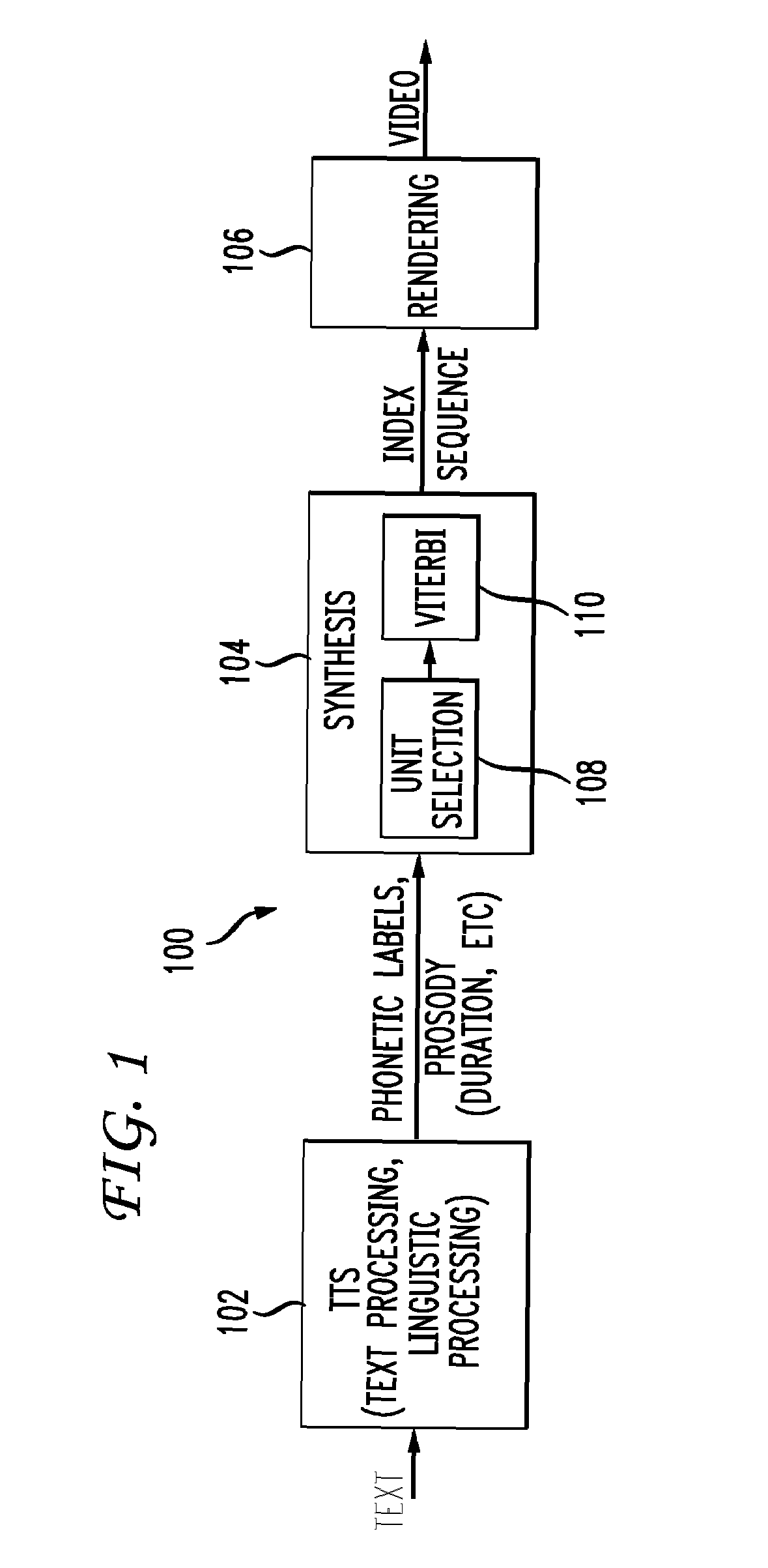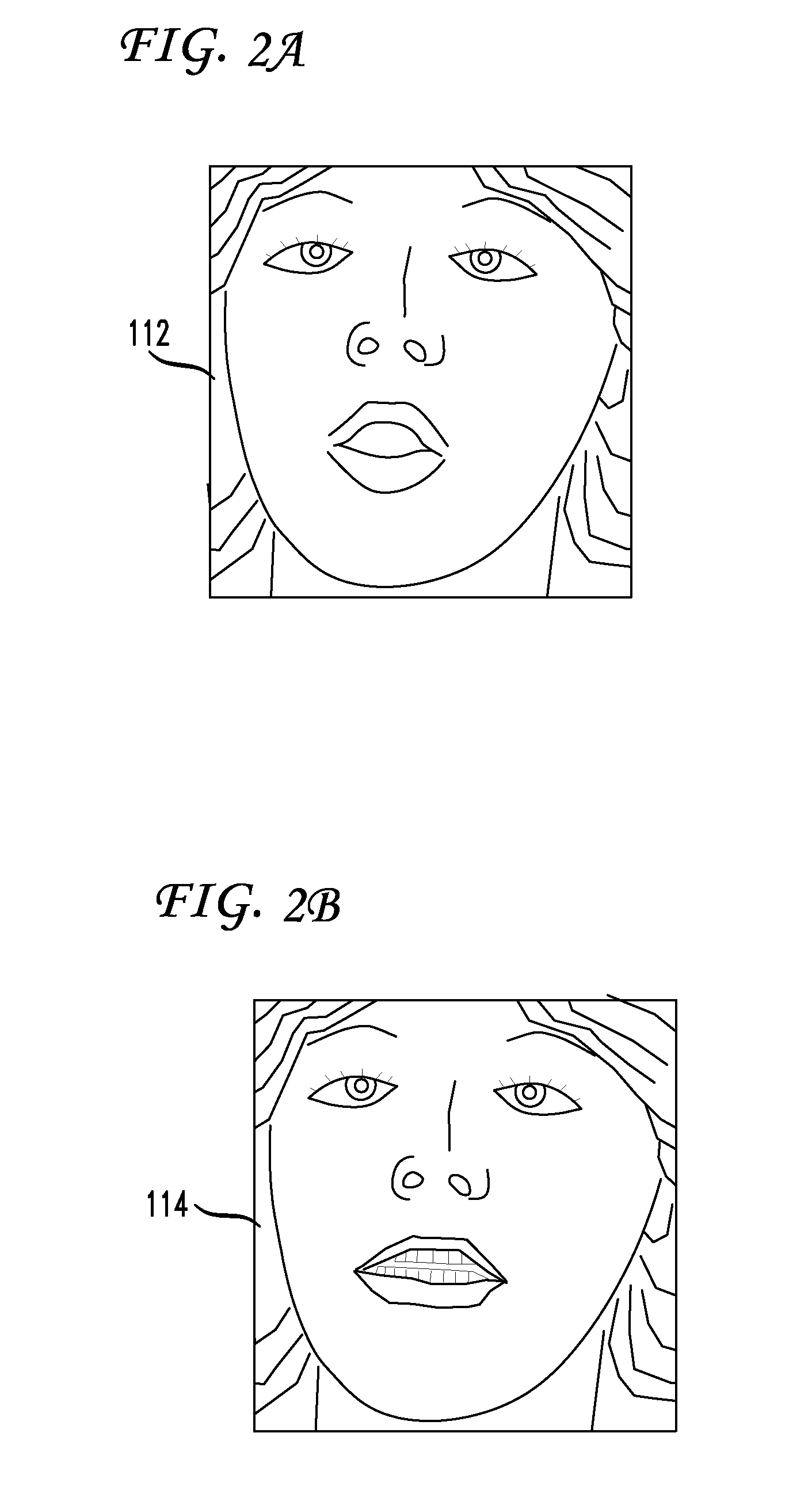System and method for triphone-based unit selection for visual speech synthesis
- Summary
- Abstract
- Description
- Claims
- Application Information
AI Technical Summary
Benefits of technology
Problems solved by technology
Method used
Image
Examples
Embodiment Construction
[0024]A concatenative visual speech system 100 includes the TTS module 102, which generates a sequence of phonemes and their durations, as shown in FIG. 1. The text can be generated from any source, such as a dialog manager in a spoken dialogue system.
[0025]The TTS module 102 includes text and linguistic processing functionality and generates phonetic labels, prosody data, and other data associated with the text, such as duration parameters. A synthesis module 104 receives the TTS input and searches for appropriate video frames from the video inventory and concatenates a series of video frames into a sequence of indices. A rendering module 106, finally, reads video frames according to the indices and generates a video sequence.
[0026]The disclosure herein focuses on a system and method of generating a video sequence having mouth movements that are synchronized with speech patterns. The concepts disclosed are also generally applicable to the indexing of multimedia databases, in additi...
PUM
 Login to View More
Login to View More Abstract
Description
Claims
Application Information
 Login to View More
Login to View More - R&D
- Intellectual Property
- Life Sciences
- Materials
- Tech Scout
- Unparalleled Data Quality
- Higher Quality Content
- 60% Fewer Hallucinations
Browse by: Latest US Patents, China's latest patents, Technical Efficacy Thesaurus, Application Domain, Technology Topic, Popular Technical Reports.
© 2025 PatSnap. All rights reserved.Legal|Privacy policy|Modern Slavery Act Transparency Statement|Sitemap|About US| Contact US: help@patsnap.com



